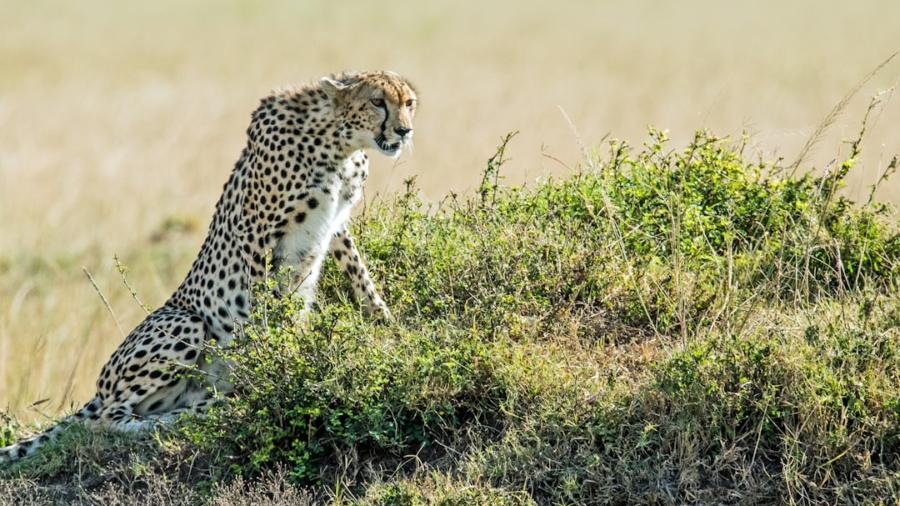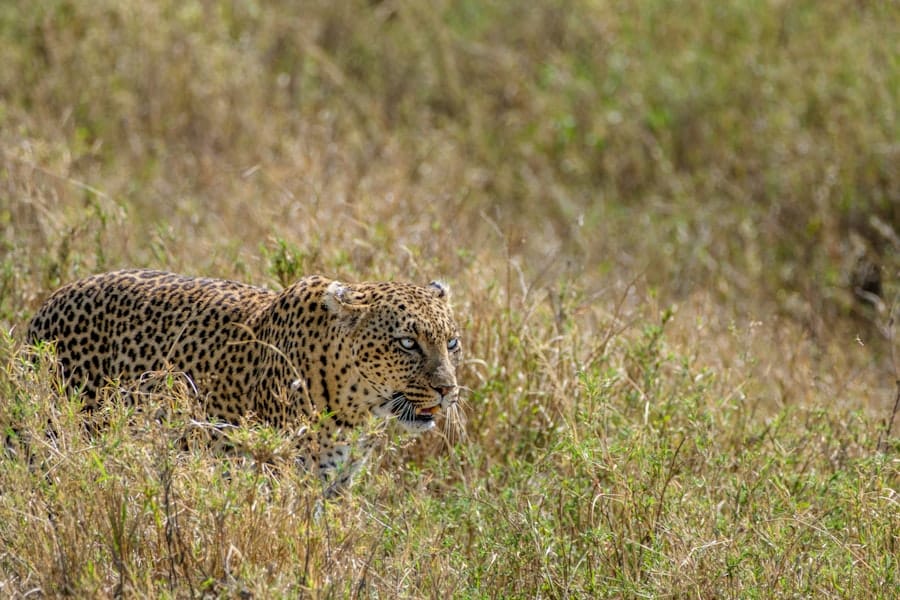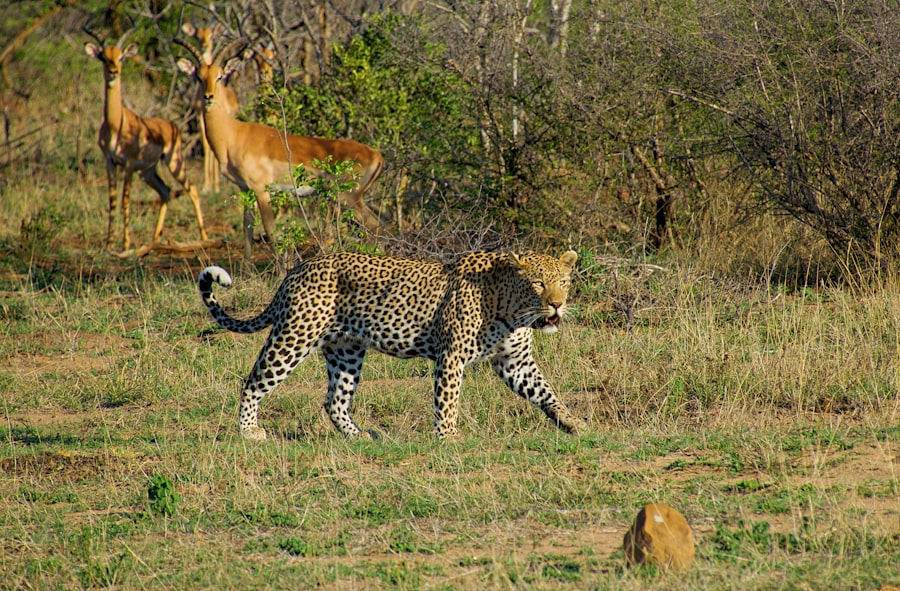The advent of 5G technology marks a significant leap in telecommunications, promising unprecedented speed, lower latency, and the ability to connect a vast number of devices simultaneously. Unlike its predecessors, 5G operates on a new spectrum of radio frequencies, including millimeter waves, which allows for faster data transmission and improved connectivity. This technology is not merely an enhancement of mobile internet; it is a transformative force that has the potential to revolutionize various sectors, including healthcare, transportation, and agriculture.
The implications of 5G extend beyond urban environments, reaching into remote areas where connectivity has traditionally been a challenge. As 5G networks continue to roll out globally, the potential applications are becoming increasingly apparent. One of the most promising areas for 5G deployment is wildlife conservation.
The ability to collect and transmit data in real-time from remote locations can significantly enhance conservation efforts. By integrating advanced technologies such as the Internet of Things (IoT), artificial intelligence (AI), and big data analytics with 5G capabilities, conservationists can monitor wildlife populations, track movements, and respond to threats more effectively than ever before. This synergy between technology and conservation is paving the way for innovative solutions to some of the most pressing challenges facing wildlife today.
Key Takeaways
- 5G technology is the next generation of mobile internet connectivity, promising faster speeds and more reliable connections.
- Wildlife conservation is crucial for maintaining biodiversity and ecological balance, protecting endangered species, and preserving natural habitats.
- Challenges in monitoring wildlife include limited access to remote areas, high costs, and the need for real-time data collection and analysis.
- 5G technology can revolutionize remote monitoring of wildlife by enabling high-speed data transmission, real-time video streaming, and advanced sensor networks.
- Case studies have shown 5G’s potential in wildlife conservation, including monitoring endangered species, preventing poaching, and tracking animal migration patterns.
Importance of Wildlife Conservation
The Ripple Effect of Species Extinction
For instance, the extinction of a single species can disrupt food chains and lead to the decline of other species that depend on it for survival. Therefore, conserving wildlife is not just about protecting animals; it is about safeguarding the intricate web of life that sustains our planet.
Cultural and Economic Significance of Wildlife Conservation
Many communities around the world rely on wildlife for their livelihoods, whether through ecotourism, sustainable hunting practices, or traditional medicine. The economic value of biodiversity is immense; studies have shown that healthy ecosystems contribute trillions of dollars annually to the global economy. Additionally, wildlife holds intrinsic value in many cultures, symbolizing heritage and identity.
Preserving the Natural World for Future Generations
Protecting these species ensures that future generations can experience and appreciate the natural world in all its diversity.
Challenges in Monitoring Wildlife
Monitoring wildlife populations presents numerous challenges that can hinder effective conservation efforts. One of the primary obstacles is the sheer scale and inaccessibility of many habitats where endangered species reside. Remote areas often lack infrastructure, making it difficult for researchers to conduct field studies or gather data consistently.
Traditional methods of monitoring, such as direct observation or manual tracking, can be labor-intensive and time-consuming, leading to gaps in data that may compromise conservation strategies. Additionally, human-wildlife conflict poses a significant challenge in monitoring efforts. As human populations expand into natural habitats, interactions between humans and wildlife increase, often resulting in negative outcomes for both parties.
For example, poaching and habitat destruction are direct threats to many species, making it imperative to monitor their movements and behaviors closely. However, conventional tracking methods may not provide real-time insights into these dynamics, leaving conservationists at a disadvantage when attempting to implement timely interventions.
5G’s Role in Remote Monitoring
The integration of 5G technology into wildlife conservation offers a groundbreaking solution to many of the challenges associated with monitoring wildlife populations. With its high-speed data transmission capabilities and low latency, 5G enables real-time communication between devices deployed in the field and conservation centers. This means that researchers can receive immediate updates on animal movements, environmental conditions, and potential threats, allowing for swift decision-making and action.
For instance, GPS collars equipped with 5G technology can transmit location data with remarkable accuracy. This allows conservationists to track migratory patterns and habitat use without the delays associated with traditional methods. Furthermore, the ability to connect multiple devices simultaneously means that researchers can deploy a network of sensors across vast landscapes to monitor various environmental parameters such as temperature, humidity, and even poaching activities.
This comprehensive data collection enhances the understanding of wildlife behavior and habitat needs, ultimately informing more effective conservation strategies.
Case Studies of 5G in Wildlife Conservation
Several case studies illustrate the transformative potential of 5G technology in wildlife conservation efforts around the globe. In Kenya’s Maasai Mara National Reserve, researchers have begun using 5G-enabled drones equipped with high-resolution cameras to monitor elephant populations. These drones can cover large areas quickly and provide real-time footage of herds, allowing conservationists to assess their health and movements without disturbing them.
Another compelling example comes from Australia, where scientists are utilizing 5G technology to monitor endangered species such as the Greater Bilby. By deploying a network of sensors throughout their habitat, researchers can track environmental changes and assess how these factors impact bilby populations.
The real-time data allows for immediate responses to threats such as habitat degradation or invasive species encroachment. This proactive approach not only aids in the survival of the bilby but also contributes to broader ecosystem health.
Advantages of 5G in Wildlife Conservation
Enhanced Data Collection and Insights
With 5G’s ability to support a vast number of connected devices simultaneously, researchers can deploy an extensive array of sensors and cameras across diverse ecosystems. This leads to richer datasets that provide deeper insights into wildlife behavior and environmental conditions.
Real-time Response to Urgent Situations
The low latency characteristic of 5G allows for instantaneous communication between devices and conservation teams. This immediacy is crucial when responding to urgent situations such as poaching incidents or natural disasters affecting wildlife habitats.
Fostering Collaboration and Innovation
5G technology facilitates collaboration among researchers across different regions and disciplines. By enabling seamless data sharing and communication through cloud-based platforms, conservationists can work together more effectively on global initiatives aimed at protecting endangered species. This collaborative approach fosters innovation and accelerates the development of new strategies for wildlife management.
Future Implications of 5G in Wildlife Conservation
Looking ahead, the implications of 5G technology for wildlife conservation are profound. As networks continue to expand globally, more remote areas will gain access to high-speed internet connectivity. This increased accessibility will empower local communities and conservation organizations to engage in monitoring efforts that were previously unattainable due to logistical constraints.
Furthermore, advancements in artificial intelligence and machine learning will likely complement 5G capabilities in wildlife conservation. By analyzing vast amounts of data collected through 5G networks, AI algorithms can identify patterns and trends that may not be immediately apparent to human researchers. This could lead to predictive modeling that anticipates changes in wildlife populations or environmental conditions, allowing for proactive management strategies.
The integration of 5G with emerging technologies such as blockchain could also enhance transparency and accountability in conservation efforts. For instance, blockchain could be used to track the provenance of wildlife products or monitor compliance with anti-poaching regulations in real-time. This level of oversight could deter illegal activities and promote sustainable practices among local communities.
Conclusion and Call to Action
The intersection of 5G technology and wildlife conservation presents an unprecedented opportunity to address some of the most pressing challenges facing our planet’s biodiversity. By harnessing the power of real-time data collection and analysis, conservationists can implement more effective strategies that protect endangered species and their habitats. However, realizing this potential requires collaboration among governments, technology companies, researchers, and local communities.
As we move forward into an era defined by rapid technological advancement, it is imperative that we prioritize wildlife conservation as a fundamental aspect of our global agenda. Investing in 5G infrastructure in remote areas is not just about enhancing connectivity; it is about ensuring the survival of countless species that share our planet. We must advocate for policies that support sustainable development while leveraging technology for conservation purposes.
Together, we can create a future where both technology and nature thrive harmoniously.
A related article discussing the predicted trends for 2023 in technology can be found at this link. This article may shed light on how advancements in technology, such as 5G, are shaping the future of various industries, including wildlife conservation. By utilizing the best software for project management, as highlighted in this article, organizations can efficiently implement remote monitoring systems to protect endangered species and their habitats. Additionally, the use of the best free software for 3D modeling, as mentioned in




